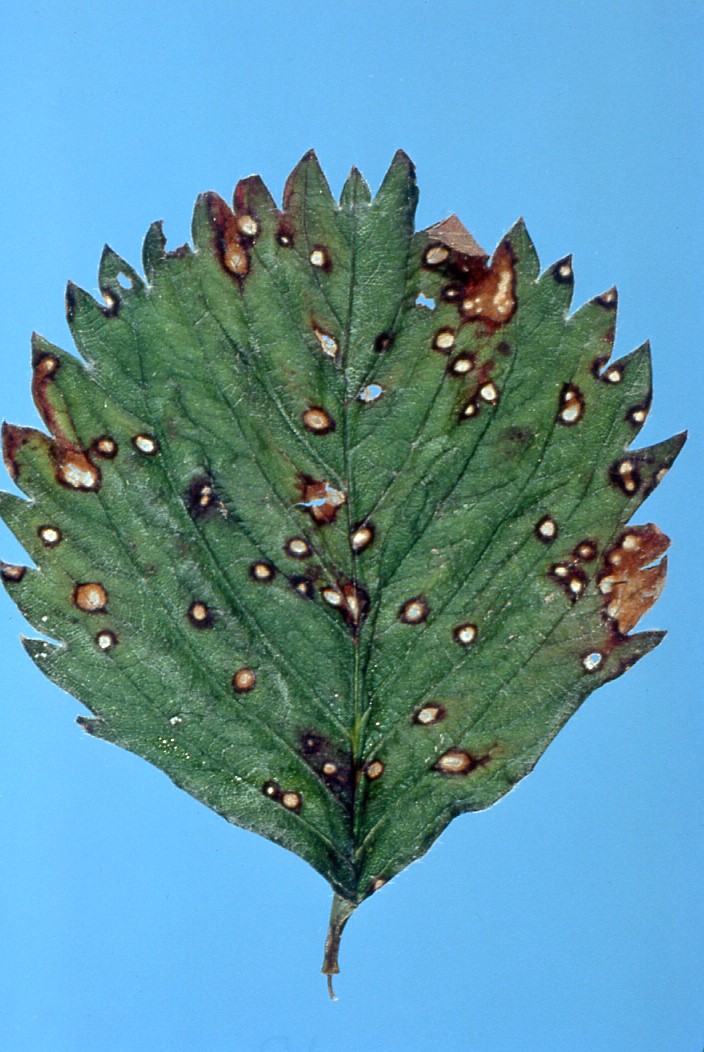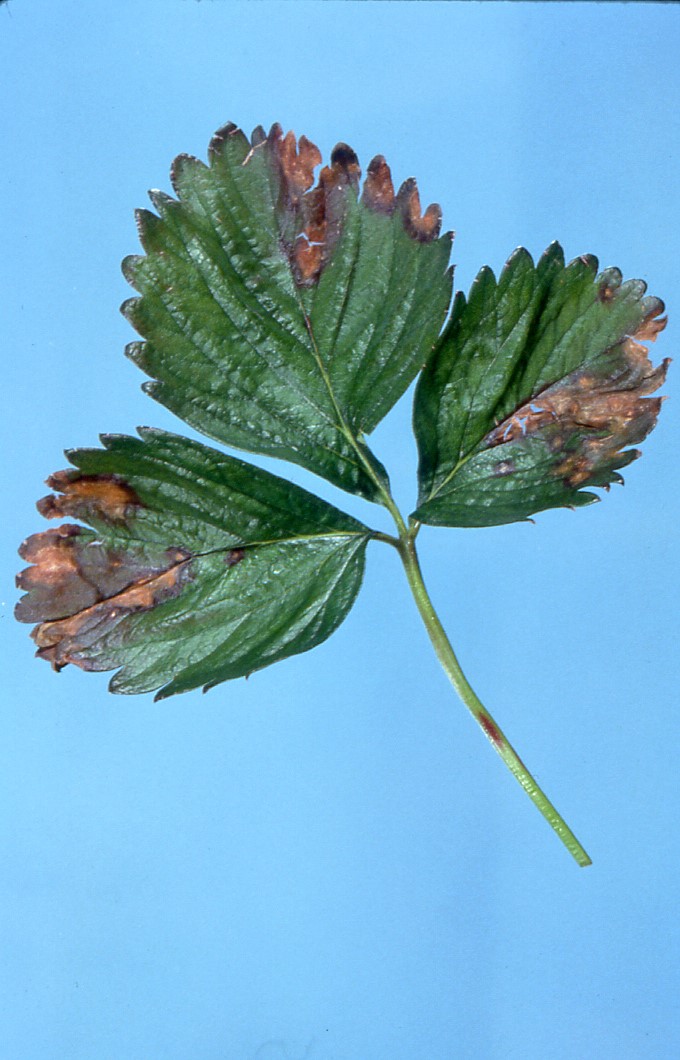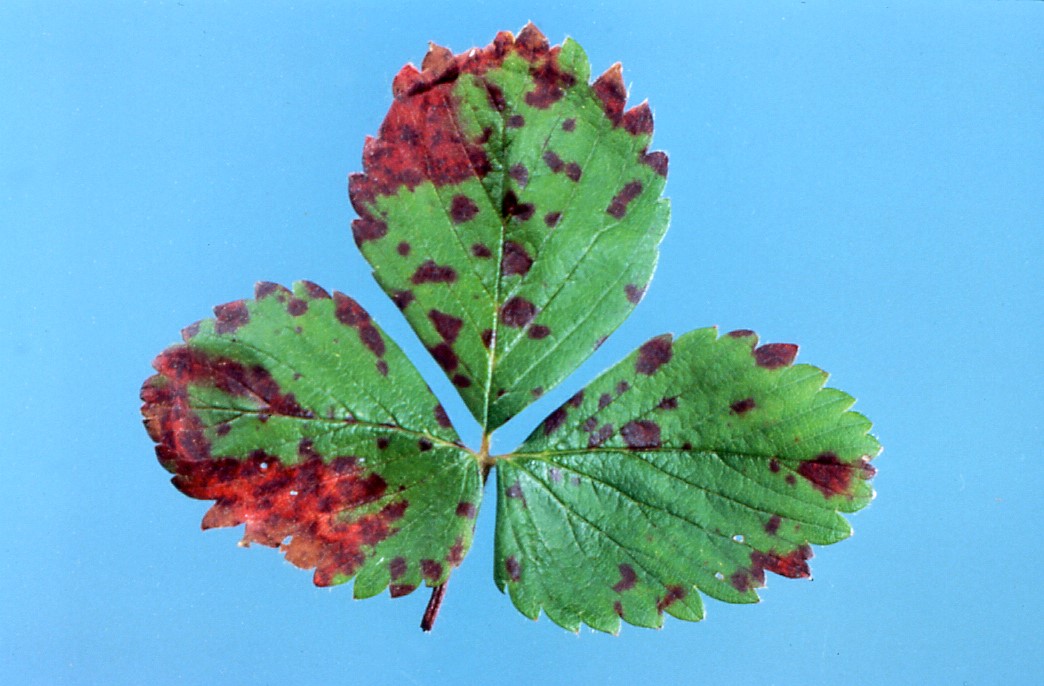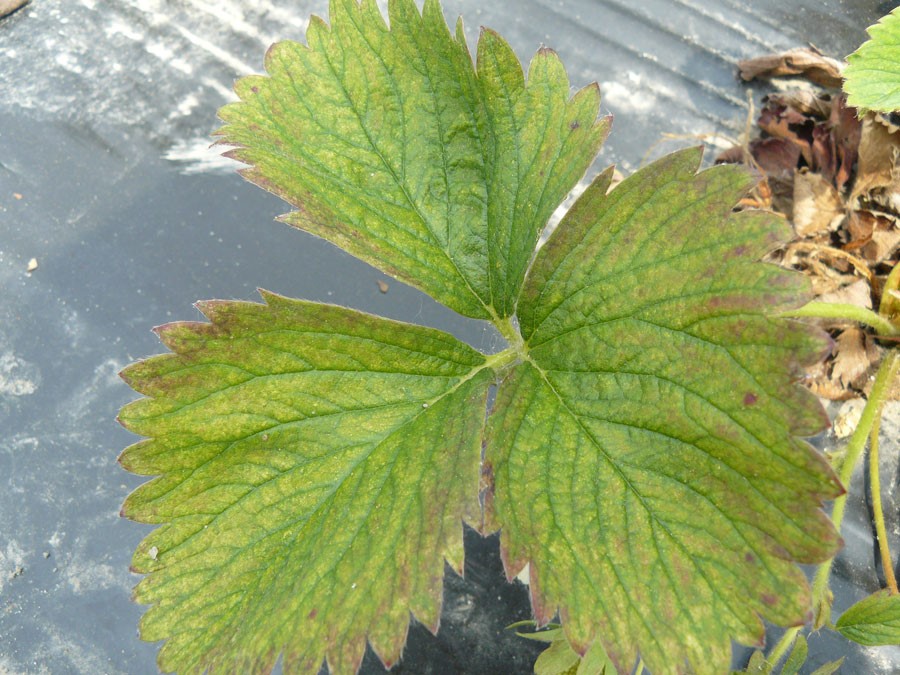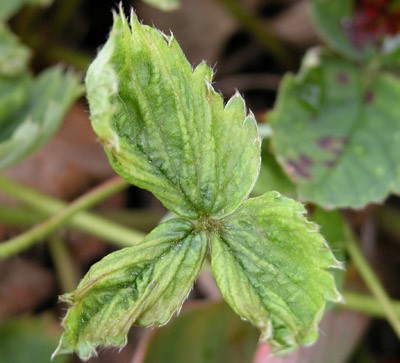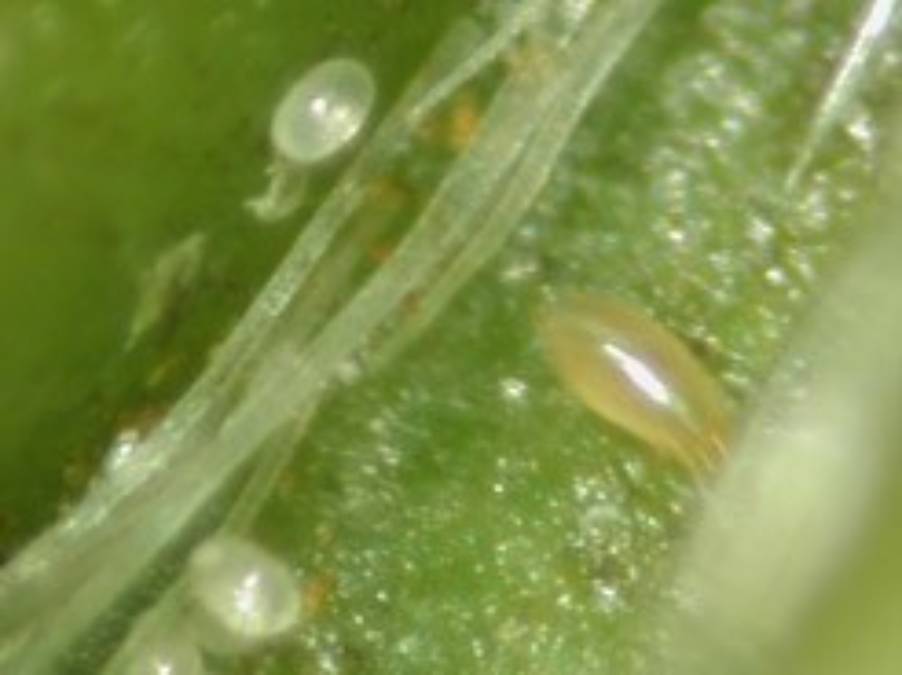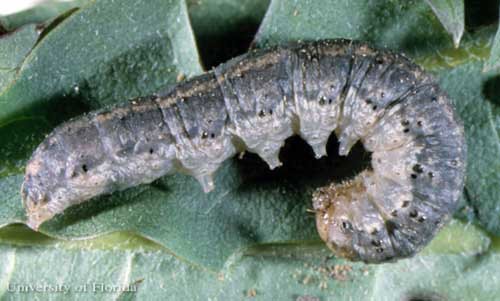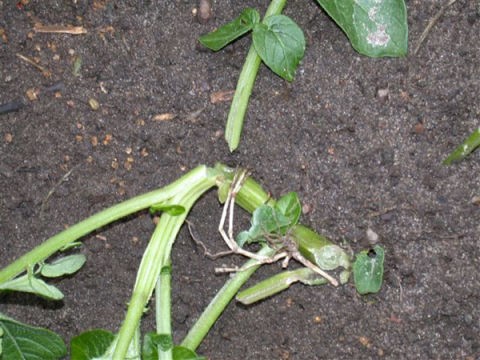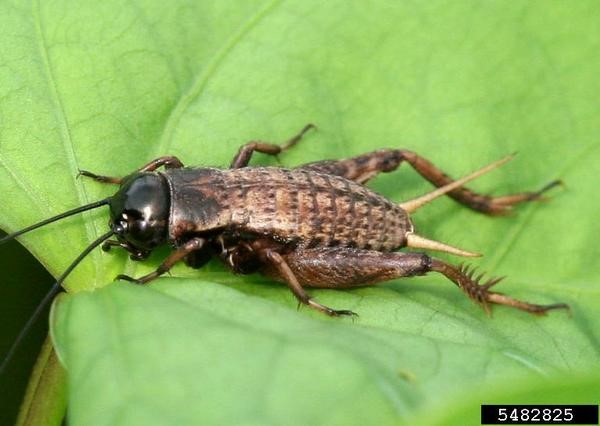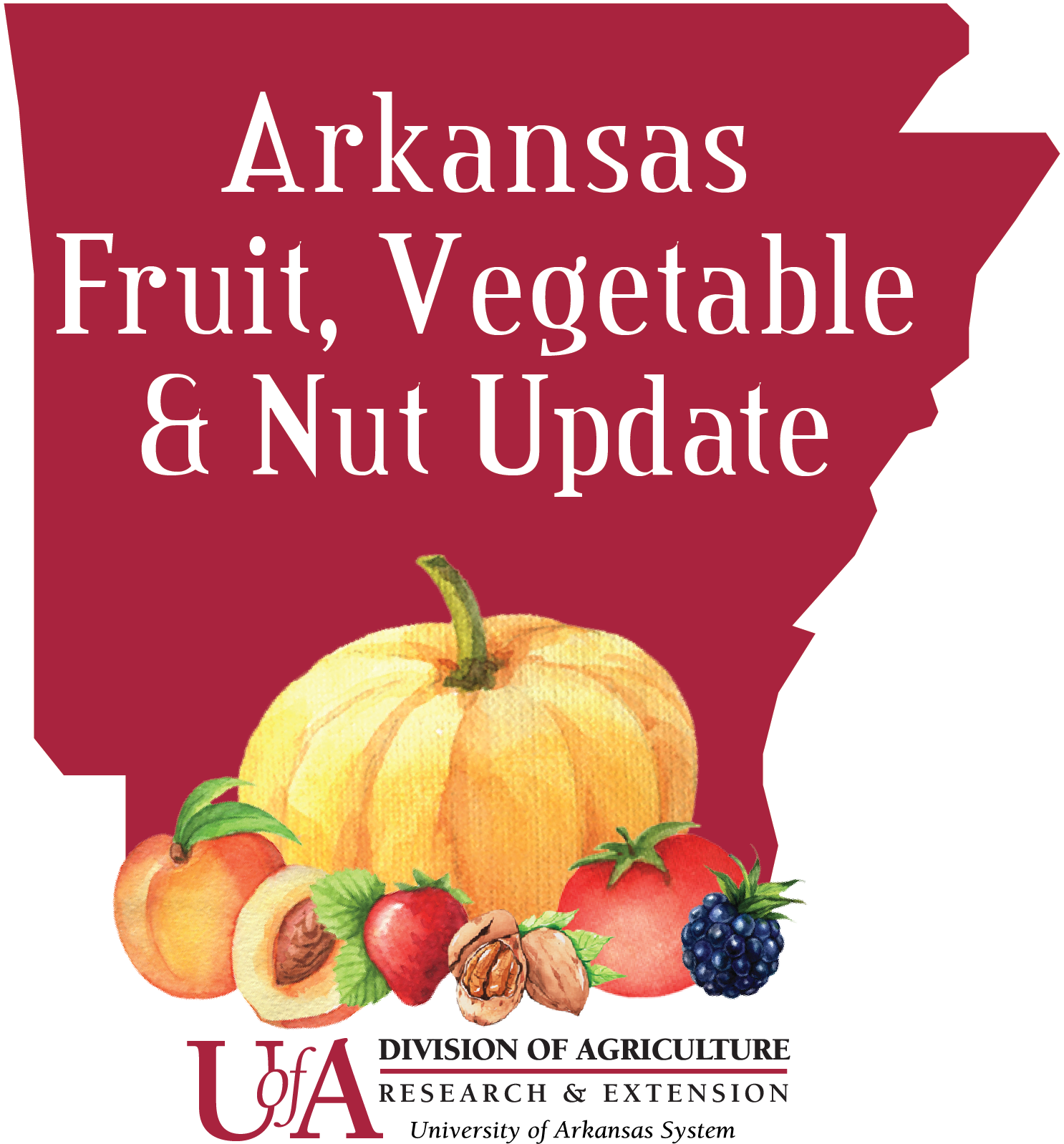
Fall Management of Strawberry Pests
It’s starting to cool down finally and the majority of the strawberries across the state are in the ground and growing. We haven’t heard of too many pest issues, which is typical for the fall months, but there are some issues that you could run in to. Remember to get out and scout your strawberries a few times in the fall, especially for insects and mites that can occasionally pop up.
Consult the Arkansas Small Fruit Management Schedule and the Southern Small Fruits Consortium IPM Guide book for more specific recommendations and pesticide use rates.
Diseases
Anthracnose
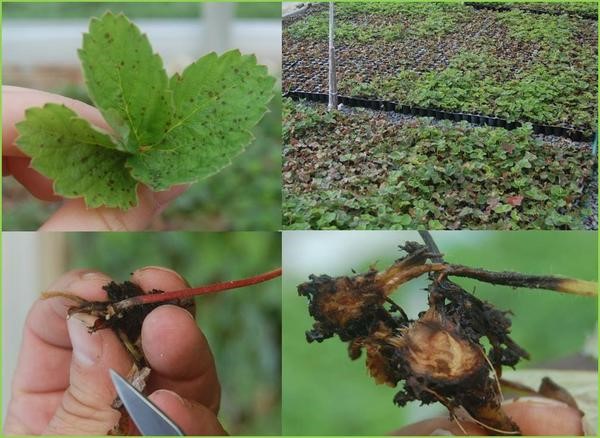
Pictures showing symptomology of Strawberry anthracnose crown Rot, including circular leaf spot and marbling in the crown due to infection. Photo Courtesy of Frank J. Louws, North Caroline State University. Source
We’ve had a lot of questions this year about the potential for anthracnose to cause issues in the fall, and in general, anthracnose is not a common problem during this time. However, if your plant source has confirmed that anthracnose issues were present, you may need to apply a fungicide to further development. If you are observing anthracnose symptomology such as petiole lesions (black sunken areas), stunting, marbling inside the crown, or plant death, contact your plant source to determine if issues have been discovered. Sending samples to the Plant Health Clinic through your county agent may also be necessary.
The crown rot species,Colletotrichum gloeosporioirdes, is the anthracnose species we generally deal with during the fall in newly planted transplants. Captan is the best option for control followed by Topsin M WSB. Avoid using FRAC 11 fungicides such as Quadris for control of crown rot anthracnose.
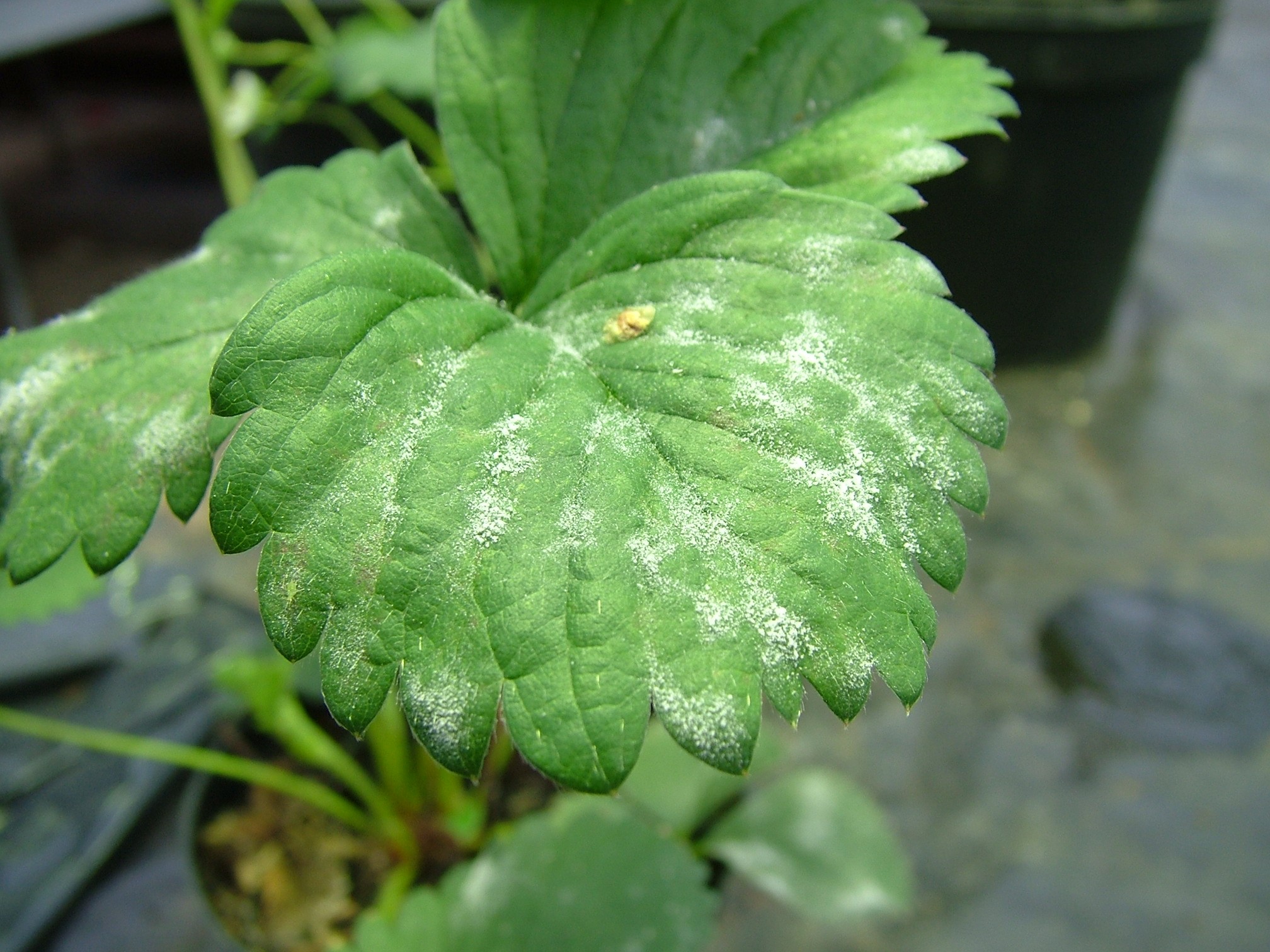
Powdery Mildew
Powdery mildew is commonly observed on transplants but doesn’t generally translate into a real issue after planting and through the fall months. Fall powdery mildew also doesn’t increase risk in the spring where the disease can be more of an issue. Economic losses from fall powdery mildew will generally only occur in high tunnels, where Quintec, Rally, or Rhyme will provide excellent control. Avoid using FRAC 11 products or product mixtures on fall powdery mildew issues.
Leaf Spot, Leaf Scorch, or Strawberry Leaf Blight
Leaf spot disease are not generally economically important diseases during the fall months, but the possibility of severe issues still exist. No thresholds currently exist but the typical disease pressure on a particular field should be taken in to account when considering control. Control should not be considered unless prevalence is high and pressure is known to be excessive in that area. Rally is the best option for control followed by Captan + Topsin which provides good control when combined.
3) Strawberry leaf blight. Photos Courtesy of Michael A. Ellis, The Ohio State University. Source.
Phytophthora
Some issues with root rot can pop up after planting in the fall, especially if rainy conditions persist or if plugs were poorly maintained. Contact your county agent to get samples taken and sent to the plant health clinic for confirmation. In general think about the history with your plant source and also with your specific fields when considering control. Fall drip applications of Ridomil Gold and metalaxyl for phytophthora both do a very good job.
Insects and Mites
Two-spotted Spider mites and Cyclamen Mites
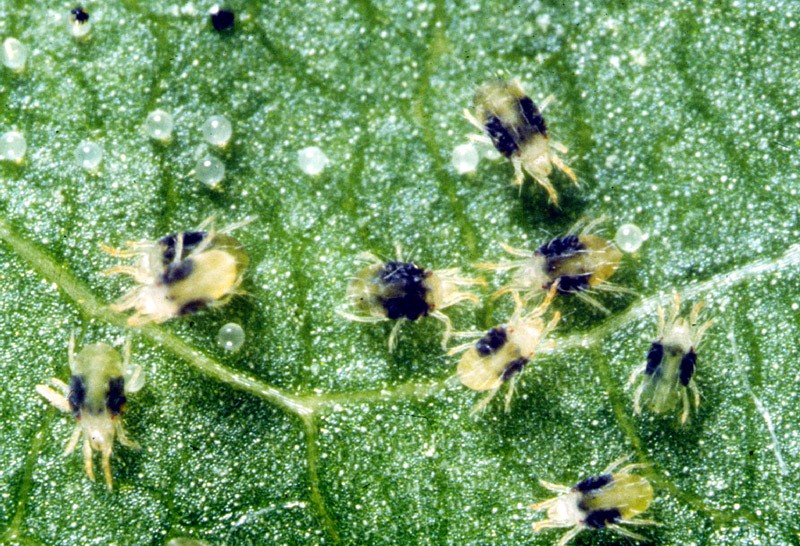
Spider mites are often the most serious pest of strawberry for many of our growers. These pests feed on the underside of leaves and can quickly turn into a serious issue, particularly in the spring months. Mites often come in on plants from nurseries,and if mites are present when plugs are received, a miticide application should be used after planting. Growers should scout before or after planting and again before row covers are put over plants. A hand lens is necessary to determien the prevalence of active mite populations. This should be used in conjunction with scouting for the yellowing and burnt-like appearance of damage that they cause to strawberry leaves.
Cyclamen mites are a much less common problem in field grown strawberries, but they can originate on plugs from heavily infested nurseries. Feeding from cyclamen mites can cause leaves to appear stunted or crumpled, and heavy infestations can severely hurt plants. A 20x hand lens can be used to identify populations, but confirmation from the plant health clinic may be necessary.
Spider mite control can be achieved with a variety of products including Agri-Mek, Acramite, Kanemite, Nealta, Oberon, Portal, Savey, Zeal, and the OMRI approved for organic JMS Stylet Oil. Cyclamen Mites can be controlled with Portal.
Cutworm
Cutworms are not very common in plasticulture strawberries, but they can be a more common issue in matted-row production systems and weedy plantings. Cutworms are primarily nocturnal and feed on both the foliage and stems of strawberry plants. Damage is usually observed in small clusters with healthy plants between damaged areas. Feeding on stems can lead to reduced crown growth and significant yield losses.
Cutworms should be controlled if damage is easily observed. Scout the field to determine the breath of the problem, and consider spot spraying if it is localized to one area. Spinosad and Intrepid will provide the best control, followed by Carbaryl, Bt, and Malathion. Make applications late in the evening to maximize control for this nocturnal pest.
Crickets
Crickets can feed on the leaves of freshly transplanted strawberry plants resulting in jagged holes, but treatment is rarely necessary and large infestations are uncommon. No threshold currently exists for crickets, and control should only be used if extremely high numbers of crickets are observed with very heavy amounts of defoliation. Consult your county agent before controlling for crickets.
